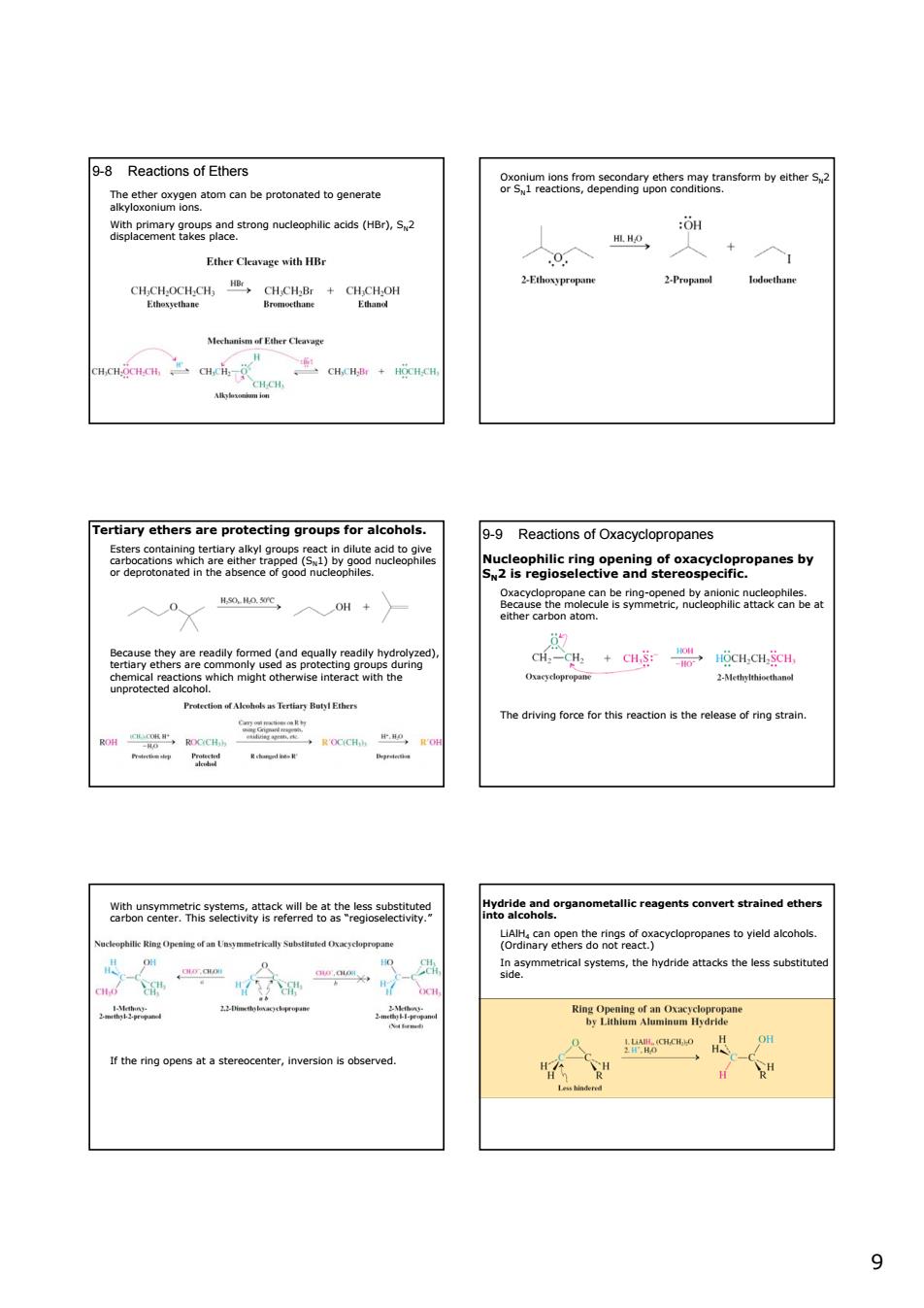正在加载图片...

9-8 Reactions of Ethers etheroy9enatomcanbeprotonatedogenerate C38cac2Yeaanomtystes2 gp2em2n9aue5nhasognudeophcacsHB,s2 :OH CHRUOUOG CC ertiary ethers are protecting groups for alc ols. 9-9 Reactions of Oxacyclopropanes be. a+a号aa The driving force for this reaction is the release of ring strain Carbon8emeam6y8ec,Bcteee8ew8aeew ert strained ether cyopropestovieldacohos 几 9 9 9-8 Reactions of Ethers The ether oxygen atom can be protonated to generate alkyloxonium ions. With primary groups and strong nucleophilic acids (HBr), SN2 displacement takes place. Oxonium ions from secondary ethers may transform by either SN2 or SN1 reactions, depending upon conditions. Tertiary ethers are protecting groups for alcohols. Esters containing tertiary alkyl groups react in dilute acid to give carbocations which are either trapped (SN1) by good nucleophiles or deprotonated in the absence of good nucleophiles. Because they are readily formed (and equally readily hydrolyzed), tertiary ethers are commonly used as protecting groups during chemical reactions which might otherwise interact with the unprotected alcohol. 9-9 Reactions of Oxacyclopropanes Nucleophilic ring opening of oxacyclopropanes by SN2 is regioselective and stereospecific. Oxacyclopropane can be ring-opened by anionic nucleophiles. Because the molecule is symmetric, nucleophilic attack can be at either carbon atom. The driving force for this reaction is the release of ring strain. With unsymmetric systems, attack will be at the less substituted carbon center. This selectivity is referred to as “regioselectivity.” If the ring opens at a stereocenter, inversion is observed. Hydride and organometallic reagents convert strained ethers into alcohols. LiAlH4 can open the rings of oxacyclopropanes to yield alcohols. (Ordinary ethers do not react.) In asymmetrical systems, the hydride attacks the less substituted side